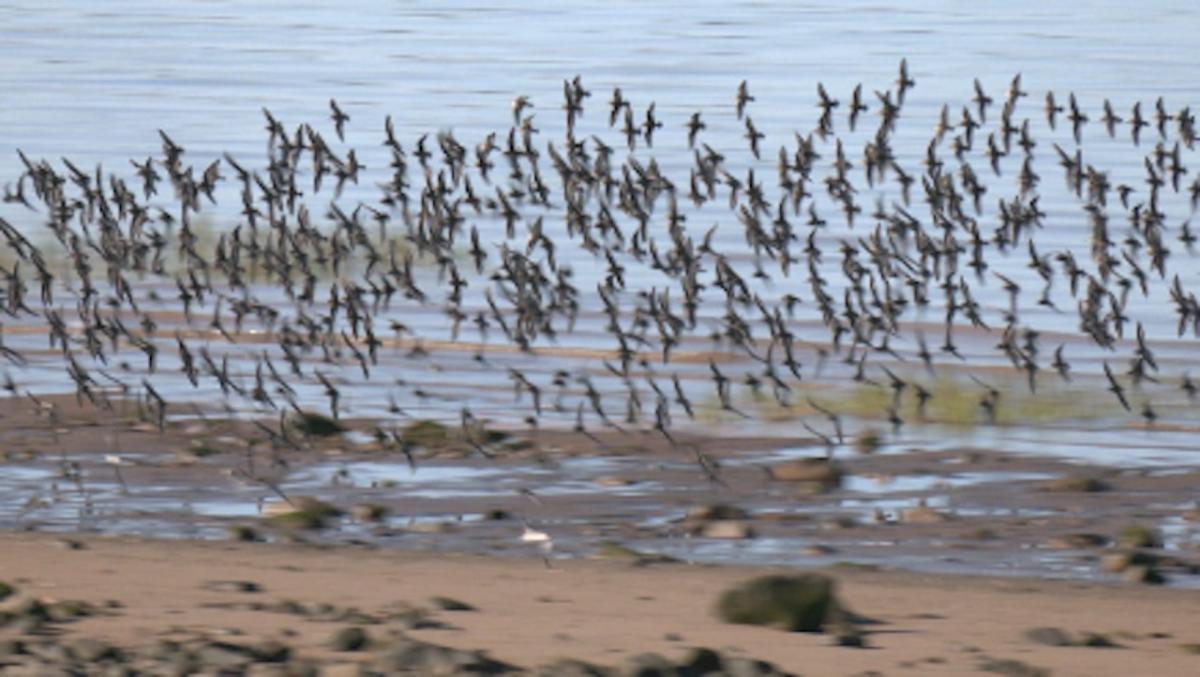Being in a large group makes your chance of getting eaten much lower.
If you’re a semipalmated sandpiper, that is, anyway.
Rielle Hoeg, Atlantic outreach biologist for Birds Canada, told The Weather Network that it’s all about strength in numbers for semipalmated sandpipers, in order to avoid predators, as they fill up the Bay of Fundy on their last stop before a long flight to South America.
Watching the murmuration is mesmerizing. The reason for the synchronous movements is to confuse predators.

Murmuration of semipalmated sandpipers. (Nathan Coleman/The Weather Network)
“Synchronicity makes it more confusing. You’re less likely to stick out if you’re all moving in kind of a flow, and predators tend to go after birds that are weak, tired or injured,” said Hoeg.
So, how do they know when to move? Are they all speaking telepathically? Well, it’s actually much simpler than that.
Hoeg says one study on starling flocks during murmuration, using mathematical modelling, showed they were only paying attention to the seven birds around them.
“So, if one bird shifts, its nearest neighbour responds and then you kind of get an effect like the wave, like you do at sporting events in the bleachers,” said Hoeg.
Now that’s an analogy we can all get behind. Let’s go sandpipers, lets go!

